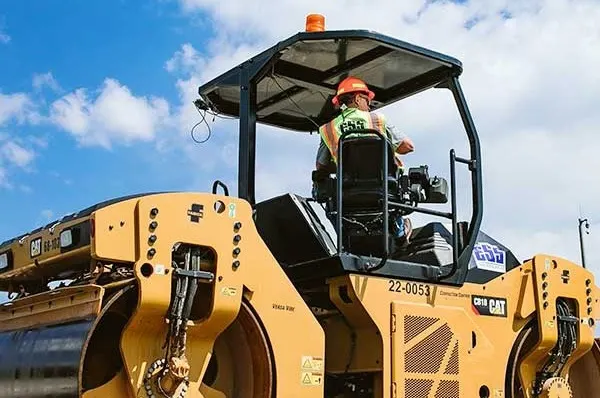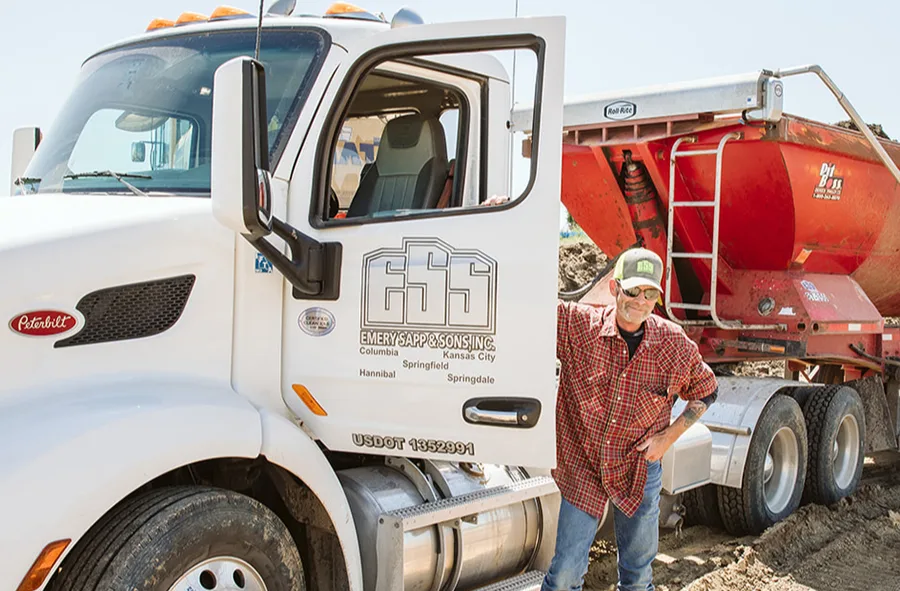CONSTRUCTION
Emery Sapp & Sons reduces safety events by 40% with Connected Training
With Samsara, Emery Sapp & Sons makes company-wide improvements to safety and efficiency. By automating and consolidating driver training and task management, they provide employees with a best-in-class experience.

Powered by the Samsara Connected Operations Cloud
Meet Emery Sapp & Sons
800 VEHICLES
1,600 EMPLOYEES
1,700+ SAMSARA DEVICES
THE CHALLENGE
Emery Sapp & Sons needed a dependable ELD solution and a platform with real-time visibility
As a 100% employee-owned, full-service heavy civil contractor, Emery Sapp & Sons (ESS) takes pride in delivering top-tier infrastructure projects while prioritizing the experience of their team. To do so, ESS continually seeks innovative technologies to enhance operations and support their workforce.
However, they faced challenges in managing compliance and visibility across their fleet. Many of their employees are new to commercial driving, making Hours of Service (HOS) compliance a cumbersome task. Additionally, their previous telematics system only provided updates every 12 hours, leaving blind spots across their fleet. To address these challenges, ESS needed a solution that delivered uninterrupted, real-time tracking and simplified compliance management.
Connected Training supports and scales our training efforts without additional manpower. The ease of assigning drivers relevant courses based on their safety events has been a gamechanger.
ERIC THIESSEN
Transportation Manager
The Solution
Samsara's reliable ELD and integrated platform improve productivity and efficiency
Confident in Samsara's proven technology—particularly its ELD reliability and industry-leading dash cams—ESS decided to skip a trial period and proceed with installation. After deploying Samsara’s ELD solution, they quickly expanded their partnership to include Samsara’s suite of driver tools including Connected Training—integrated learning management, AI Dash Cams, and equipment tracking solutions. Now, the Connected Operations Cloud gives them a single source of truth when managing their vehicle fleet and equipment.
![]() Connected Training
Connected Training
Personalized learning helps drivers reduce safety events by 40%
ESS’ driver training relied on standardized in-person sessions and group settings, making it difficult to tailor coaching at scale. With Samsara Connected Training, ESS introduced personalized training for all drivers directly in the Driver App. This approach improved driver safety behavior, reduced the need for manager-led coaching, and cut safety events per 1,000 miles by 40%.
Learn how

![]() Asset Tag
Asset Tag
The Asset Tag’s discreet placement and real-time tracking fill data gaps and minimize loss
ESS’ previous equipment tracking system provided location updates every 12 hours, making it difficult to mitigate theft or recover misplaced items. To further consolidate their operations, they implemented the Samsara Asset Tag to gain the same real-time visibility they were accustomed to with their vehicle fleet. With equipment costing up to $150,000, the Asset Tag’s discreet placement ensures thieves do not remove the tracker and any lost equipment can be easily recovered.
Learn how![]() WORKFORCE APPS
WORKFORCE APPS
The Driver App streamlines compliance to improve ESS’ FMCSA score by 11%
ESS’ team previously used fragmented tools for tasks, HOS compliance, and maintenance, leading to inefficiencies and FMCSA violations. Using the Driver App, ESS streamlines driver workflows for easy task management, real-time delivery tracking, and proactive vehicle maintenance reporting. By centralizing driver tasks, ESS has improved their maintenance program and boosted their FMCSA score by 11%.
Learn how

![]() Video-Based Safety
Video-Based Safety
In-cab alerts help reduce reportable accidents by 40%
With AI-based, in-cab alerts, ESS tackles key safety concerns without requiring additional in-person training. Drivers receive real-time alerts for risky behaviors like mobile device use, no seatbelt use, and close following distance, enabling immediate self-correction. As a result, ESS experienced a 25% reduction in at-fault accidents, a 40% YoY drop in DOT-reportable incidents, and significant behavior improvements, including a 65% decrease in mobile device use.
Learn how


![Video-Based Safety [icon]](https://images.ctfassets.net/bx9krvy0u3sx/79hjZ8V9rQKrIz0DxMoWzN/9ea5562cdba36bb025a519c5709c01f2/safety.png?w=2160&h=2160&fm=webp&q=80)